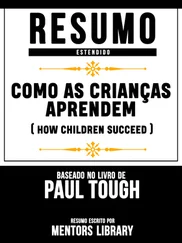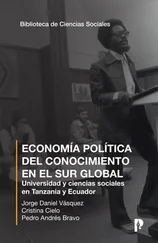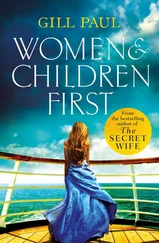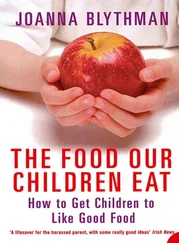In fact, the character-strength approach of Seligman and Peterson isn’t an expansion of programs like CARE; if anything, it is a repudiation of them. In 2008, a national organization called the Character Education Partnership published a paper that divided character education into two categories: programs that develop “moral character,” which embodies ethical values like fairness, generosity, and integrity; and those that address “performance character,” which includes values like effort, diligence, and perseverance. The CARE program falls firmly on the “moral character” side of the divide, but the seven strengths that Randolph and Levin chose for their schools leaned much more heavily toward performance character: while they do have a moral component, strengths like zest, optimism, social intelligence, and curiosity aren’t particularly heroic; they make you think of Steve Jobs or Bill Clinton more than Martin Luther King Jr. or Gandhi.
The two teachers Randolph chose to oversee the school’s character initiative were K. C. Cohen, the guidance counselor for the middle and upper schools, and Karen Fierst, a learning specialist in the lower school. Cohen was friendly and thoughtful, in her mid-thirties, a graduate of Fieldston, the private school just down the road from Riverdale. She was intensely interested in character development, and, like Randolph, she was worried about the character of Riverdale students. But she was not convinced by the seven character strengths that Riverdale had chosen. “When I think of good character, I think, ‘Are you fair? Are you honest in dealings with other people? Are you a cheater?’” she told me. “I don’t think so much about ‘Are you tenacious? Are you a hard worker?’ I think, ‘Are you a good person?’”
Cohen’s vision of character was much closer to moral character than performance character, and during the months I visited Riverdale, that vision remained the dominant one. When I spent a day at the school in the late winter of 2011, sitting in on a variety of classes and meetings, messages about behavior and values were everywhere, but those messages stayed almost entirely in the moral dimension. It was a hectic day at the middle school—it was pajama day, plus there was a morning assembly, and then on top of that, the kids who were going on the two-week class trip to Bordeaux for spring break had to leave early in order to make their overnight flight to Paris. The topic for the assembly was heroes, and half a dozen students stood up in front of their classmates—about three hundred and fifty kids in all—and each made a brief presentation about a particular hero he or she had chosen: Ruby Nell Bridges, the African American girl who was part of the first group to integrate the schools in New Orleans in 1960; Mohamed Bouazizi, the Tunisian fruit vendor whose self-immolation had helped spark the recent revolt in that country; the actor and activist Paul Robeson; the boxer Manny Pacquiao.
In the assembly, in classes, and in conversations with different students, I heard a lot of talk about values and ethics, and the values that were emphasized tended to be social values: inclusion, tolerance, diversity. (I heard a lot more about black history at Riverdale than I did at the KIPP schools I visited.) A photo exhibit at one end of the school’s gorgeous sunlight-drenched cafeteria featured portraits of pointedly diverse families—gay couples, blind parents, mixed-race families, adopted kids. One eighth-grade girl I asked about character said that for her and her friends, the biggest issue was inclusion—who was invited to whose bat mitzvah; who was being shunned on Facebook. Character, as far as I could tell, was defined at Riverdale mostly in terms of helping other people—or at least not hurting their feelings. I heard much less talk about how possessing character strengths might help a person lead a more successful life.
Yet Randolph told me that he had concerns about a character program that didn’t go beyond those kinds of nice-guy values. “The danger with character is if you just revert to these general terms—respect, honesty, tolerance—it seems really vague,” he said. “If I stand in front of the kids and just say, ‘It’s really important for you to respect each other,’ I think they glaze over. But if you say, ‘Well, actually you need to exhibit self-control,’ or you explain the value of social intelligence—this will help you collaborate more effectively—then it seems a bit more tangible.”
When I spoke to Karen Fierst, the teacher who was overseeing the character project for the Riverdale lower school, she said she was worried that it would be a challenge to convince the students and their parents that there was anything in the twenty-four character strengths that might actually benefit them. For KIPP kids, she said, the notion that character could help them get through college was a powerful lure, one that would motivate them to take the strengths seriously. For kids at Riverdale, though, there was no question that they were going to graduate from college. “It will just happen,” Fierst explained. “It happened to every generation in their family before them. And so it’s harder to get them to invest in this idea. For KIPP students, learning these strengths is partly about trying to demystify what makes other people successful—kind of like, ‘We’re letting you in on the secret of what successful people are like.’ But kids here already live in a successful community. They’re not depending on their teachers to give them the information on how to be successful.”
Dwight Vidale teaches English to middle- and high-school students at Riverdale. He is a Riverdale alumnus, class of 2001, and as an African American, he is something of a rarity in the Riverdale faculty lounge; when I met him, he was the only black teacher at the high school. Vidale grew up in the Bronx and was raised by his mother, a secretary, and his stepfather, an electrician. He came to Riverdale in high school, a scholarship kid, and though he loved the school’s vast resources and the academic challenge of the classes, he told me, the wealth of his white classmates was hard to get used to. In ninth grade, he was paired with a girl in his class on a school project, and she invited him to her family’s home on the Upper East Side to work on it. “I will never forget walking into her apartment,” he told me. “I was just blown away by the opulence.” That experience, he said, made him keep some distance between himself and many of his classmates. In all his years at Riverdale, he told me, he never invited his white friends to his house. He felt his life was just too different from theirs.
Now, teaching kids growing up amid similar wealth, Vidale finds he has a more nuanced view of affluent childhoods. Though he came from what he calls “very humble beginnings,” he drew strength from the fact that his mother was always in his corner, always there when he needed to talk. Many of his students seem to have more distant relationships with their parents. He sees a lot of what the Riverdale staff call helicopter parents—“always hovering around, ready to swoop in for the rescue”—but, he said, “that doesn’t mean they’re making emotional connections with their kids, or even spending time with their kids.”
On one professional-development day when I was at Riverdale, Dominic Randolph arranged a screening for his entire faculty of Race to Nowhere, a movie about the stresses facing mostly privileged American high-school students that had become an underground hit in many wealthy suburbs, where one-time showings at schools, churches, and community centers were bringing out hundreds or even thousands of concerned parents. The movie paints a grim portrait of contemporary adolescence, rising to an emotional crescendo with the story of an overachieving teenage girl who committed suicide, apparently because of the ever-increasing pressure to succeed that she felt both at school and at home. At Riverdale, the film seemed to have a powerful effect on many of the staff; one teacher came up to Randolph afterward with tears in her eyes.
Читать дальше


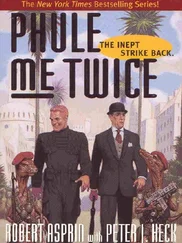
![Коринн МакКей - How to Succeed as a Freelance Translator [calibre 3.46.0]](/books/402693/korinn-makkej-how-to-succeed-as-a-freelance-transl-thumb.webp)


